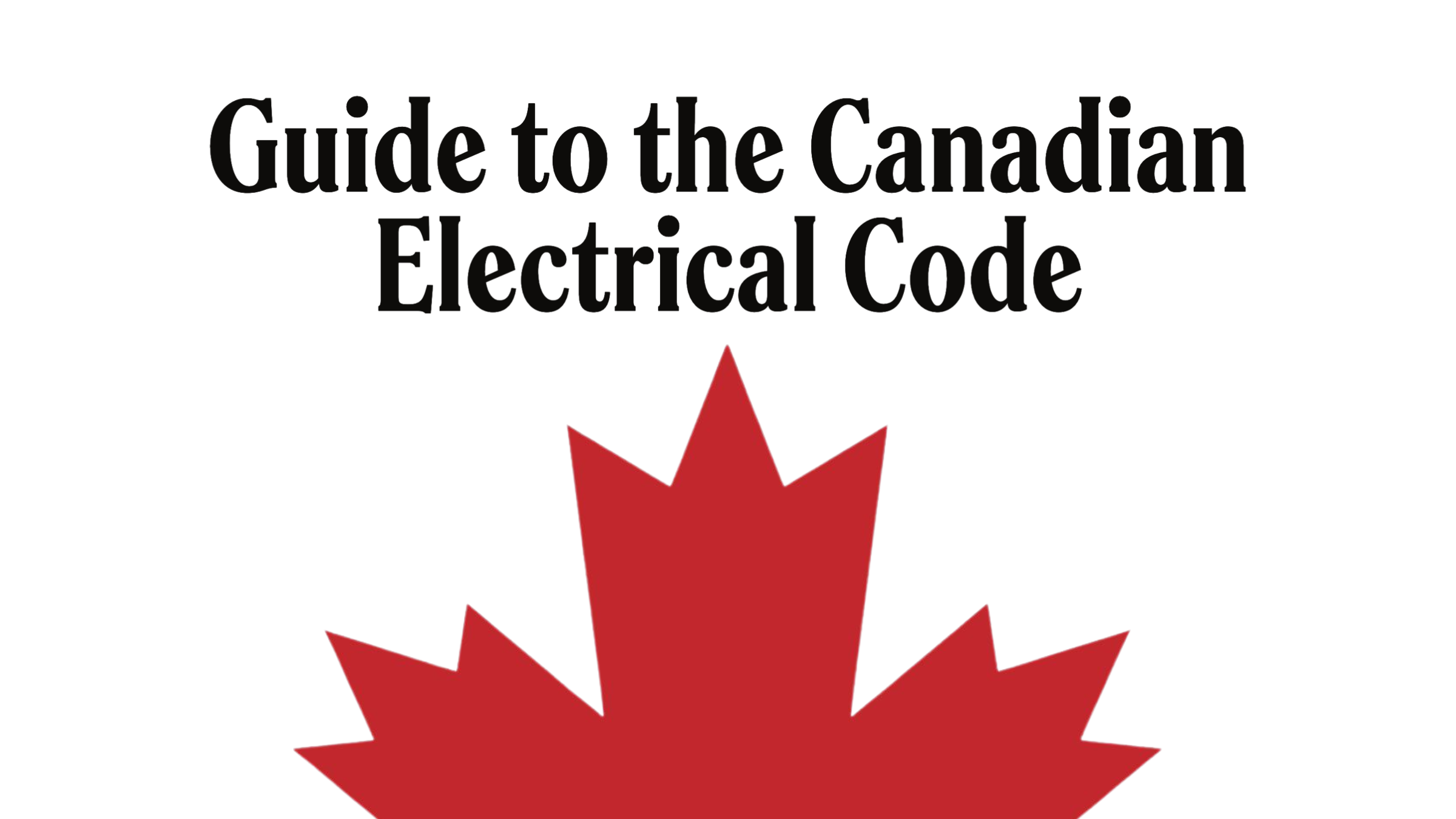Guide to the Canadian Electrical Code, Part 1, 25th Edition – A Road Map: Section 58

March 4, 2022
By William (Bill) Burr
The Code is a comprehensive document. Sometimes it can seem quite daunting to find the information you need quickly. This series of articles provides a guide to help users find their way through this critical document. It is not the intent of these articles to replace the notes in Appendix B or the explanations of individual requirements contained in the CEC Handbook**but hopefully provide help to navigate the Code.
Section 58 — Passenger Ropeways and Similar Equipment
Rule 58-000 states that Section 58 is a supplementary or amendatory section of the Code and applies to passenger ropeways as defined in the CSA Z98, Passenger Ropeways and Passenger Conveyors standard and includes tramways, chairlifts, gondolas, surface ropeways, passenger conveyors, and similar equipment. In addition, ANSI B77.1, Passenger Ropeways – Aerial Tramways, Aerial Lifts, Surface Lifts, Tows and Conveyors – Safety Requirements, and Can/CSA-C22.3 No.1, Overhead Systems should be referenced.

Appendix B and the CE Code Handbook provide additional information.
Rule 58-002 provides special terminology definitions for Cabin, Messenger, Passenger Conveyor and Station.
General requirements
Rule 58-010 requires that, in addition to the spacing requirements of Rule 2-308, the headroom in working spaces around controllers, disconnecting means, and other electric equipment must be no less than 2.0 m. Part 2 of the rule provides relaxation of requirements for headroom if:
- Only authorized persons have access to the area,
- The working space is kept clear of obstructions, and either:
- guarded, isolated or insulated live parts can be examined, adjusted, serviced or maintained while energized without removing the protection, or
- A cautionary label advising that the equipment cannot be examined, adjusted, serviced, or maintained while energized is applied, or
- The applied voltage is equal to or less than 30 V RMS or 42 V peak.
Rule 58-012 specifies the bonding to ground of circuits of less than 50 volts as per Rule 10-114. Communication, control, remote control, monitoring, supervision, and signal circuits may be isolated and grounded following Rule 10-206. The haul rope for these circuits may be isolated and ungrounded.
Rule 58-014 limits voltage for all circuits to 300 volts-to-ground except for:
- 750 volts-to-ground for motors, machine brakes, motor-generator sets, floodlighting, and heaters,
- 120 volts-to-ground for motor control circuits,
- 48 volts-to-ground for communication, control, remote control, monitoring, supervision, and signal circuits except for hand-crank-type telephone signal bell circuits, and
- 30 volts-to-ground or 40 volts-to-ground peak for aerial conductors and cables carried between towers supporting passenger ropeway, except hand-crank-type telephone signal bell circuits.
Rule 58-016 provides that luminaires for night skiing or similar floodlighting applications may be installed on passenger ropeway towers and stations if:
- there is a circuit breaker installed in a lockable enclosure that disconnects all ungrounded conductors, and
- that a Class A GFCI protects each circuit to the luminaires
Conductors
Rule 58-102 specifies that the minimum size of insulated conductors for all communication, control, remote control, monitoring, supervision, and signal circuits be No. 26 AWG copper, except for circuits contained in travelling cables where the minimum size must be No. 20 AWG.
Rule 58-104 permits that:
- Optical fiber cables, shielded cables, and insulated conductors for operating devices, power, motor, heating, air conditioning, operating, signal, communication, control, safety, fire alarm, and lighting circuits may be grouped in raceway systems or travelling cables, providing the insulation rating for each conductor is not less than the conductor with the maximum circuit voltage; and
- Optical fiber cables, shielded cables, and insulated conductors for operating devices, operating, signal, communication, control, safety, and fire alarm circuits may be run in the same aerial cable, providing that the insulation rating for each conductor is not less than the rating of the insulated conductor with the maximum circuit voltage.
Optical fiber cables include conductive, non-conductive and hybrid types as defined in Rule 56-102.
Wiring methods
Rule 58-200 outlines acceptable wiring methods in passenger ropeways and similar equipment:
- Generally, all insulated conductors and cables, including optical fiber cables in machinery spaces, control spaces, in or on cabins, in machine rooms and control rooms, must be installed in rigid metal conduit, EMT, rigid PVC conduit or wireways, except for travelling cables connecting the movable drive carriage or movable return carriage.
- In addition, the following wiring methods may be used:
- mineral-insulated cable;
- aluminum-sheathed cable;
- armoured cable;
- cable trays installed per Rules 12-2200 to 12-2210;
- flexible conduit or liquid-tight flexible conduit between raceways and limit switches, interlocks, operating devices, or similar devices;
- flexible conduit or liquid-tight flexible conduit between control panels and motors, machine brakes, motor-generator sets, disconnecting means, or pumping unit motors and valves;
- supported jacketed cables installed between raceways and signal equipment and between raceways and operating devices that have mechanical protection, including:
- cables used in Class 1 extra-low voltage and Class 2 low-energy circuits, including but not limited to travelling cables connecting the movable carriage or movable return carriage;
- extra-low-voltage control cable;
- communication cable;
- fire alarm and signal cable;
- multi-conductor thermoplastic-insulated cable;
- hard-usage and extra-hard-usage cables;
- auxiliary gutters between controllers, starters, and similar apparatus; and
- flexible cords and cables used in extra-low-voltage circuits not greater than 2 m in length, supported and provided with mechanical protection.
Rule 58-202 requires that supports for travelling cables be located and provided with suitable guards to prevent damage to the cables and contact with other equipment.
Protection and control
Rule 58-300 requires that motor control devices be arranged, as per Rules 28-312 and 28-400, to prevent automatic restarting after shutdown where restarting could cause injury to persons.
Rule 58-302 provides that the disconnecting means for the ungrounded conductors of the main drive motor and auxiliary drive motor, including their ventilation and control circuits, for each passenger ropeway or passenger conveyor must not contain a provision to automatically close the disconnecting means, and must be:
- a single disconnect which also disconnects power to the driving machine brake(s) control circuit directly or through an auxiliary contact that is positively opened mechanically (the opening not being solely dependent on springs),
- an externally operated fusible switch or a circuit breaker, capable of being locked in the open position, and clearly labelled describing the connected load,
- readily accessible to authorized persons and located where it is visible on entry to the control room or machinery area,
- provided with a sign to identify the location of the supply side overcurrent protective device, and
- a single disconnect for motors and control circuits of multiple driving machines or motors connected to a single passenger ropeway or passenger conveyor.
Rule 58-304 provides that disconnecting means for utilization equipment must be:
- a single disconnect for all ungrounded conductors,
- capable of being locked in the open position and located in the machine room, control room, machine space, or control space, and
- provided with a sign to identify the location of the supply side overcurrent protective device.
Rule 58-306 requires the coordination of the overcurrent protection with any upstream overcurrent protective devices.
Rule 58-308 requires a Class A GFCI to protect every 125 V single-phase receptacle installed in machine rooms, control rooms, machine spaces, control spaces, and counterweight enclosures.
Rule 58-310 specifies that motor controllers be rated to comply with Rule 28-500(1) except where the controller limits the available power and is labeled “power limited”.
Branch circuits
Rule 58-400 requires that each machine room, control room, machinery space, and control space must have:
- luminaires controlled by lighting switches within easy reach of the point of entry and not supplied from the load side of the GFCIs required by Rule 58-308
- a 125 V, single-phase, duplex receptacle, having a configuration per Diagram 1, and
- a separate branch circuit for the supply of luminaires and receptacles.
Rule 58-402 requires that branch circuits in a building or room containing counterweights comply with the requirements of Rule 58-400
Rule 58-404 specifies that utilization equipment other than that identified in Rules 58-400 and 58-402 must be supplied by a separate branch circuit with overcurrent devices located in the machinery room, control room, machinery space or control space.
Regenerative power
Rule 58-500 requires a means to absorb regenerative power that cannot be absorbed under overhauling load or braking conditions.
Grounding of towers and stations
Rule 58-600 requires grounding of each metal tower and metal station structure of passenger ropeways, passenger conveyors and material ropeways utilizing conductors
installed following Rules 58-602 – 58-610.
Rule 58-602 specifies that the grounding conductors for towers and stations be not less than No. 4 AWG. Remember to observe the bonding requirements for all non-current-carrying parts of electrical equipment, raceways, or enclosures to ensure proper bonding to the service equipment or system grounding conductor. Do not use the requirements of Rule 58-600 for bonding to ground purposes.
Rule 58-604 requires the securely fastened in place of conductors and direct attachment
to the supporting surface without the use of insulating supports.
Rule 58-606 requires the location and protection of conductors against corrosion and mechanical damage.
Rule 58-608 requires the connection of ground conductors to grounding electrodes as specified in Section 10. Note that there is a preference for field-assembled grounding electrodes because of their superior performance, ease of use, and durability.
Rule 58-610 specifies the running of ground conductors either inside or outside buildings.
In the next installment, we will be discussing Section 60 — Electrical Communications Systems.
Source: CSA C22.1:21, Canadian Electrical Code, Part 1 – Safety Standard for Electrical Installations. © 2021 Canadian Standards Association. Please visit store.csagroup.org. With the permission of CSA Group, material is reproduced from CSA Group standard CSA C22.1:21, Canadian Electrical Code, Part 1 – Safety Standard for Electrical Installations. This material is not the complete and official position of CSA Group on the referenced subject, which is represented solely by the Standard in its entirety. While use of the material has been authorized, CSA Group is not responsible for the manner in which the data are presented, nor for any representations and interpretations. No further reproduction is permitted. For more information or to purchase standard(s) from CSA Group, please visit store.csagroup.org or call 1-800-463-6727.
William (Bill) Burr is an associate member of the Canadian Electrical Code, Part 1, Technical Committee and formerly Chair of the Canadian Advisory Council on Electrical Safety (CACES), Chief Electrical and Elevator Inspector for the Province of BC & the Northwest Territories, Director of Electrical and Gas Standards Development and Director of Conformity Assessment at CSA Group. Bill can be reached at Burr and Associates Consulting billburr@gmail.com

















